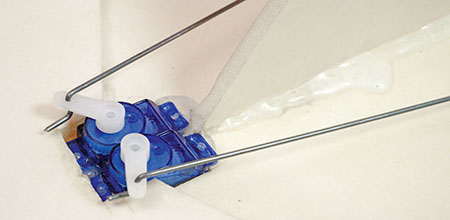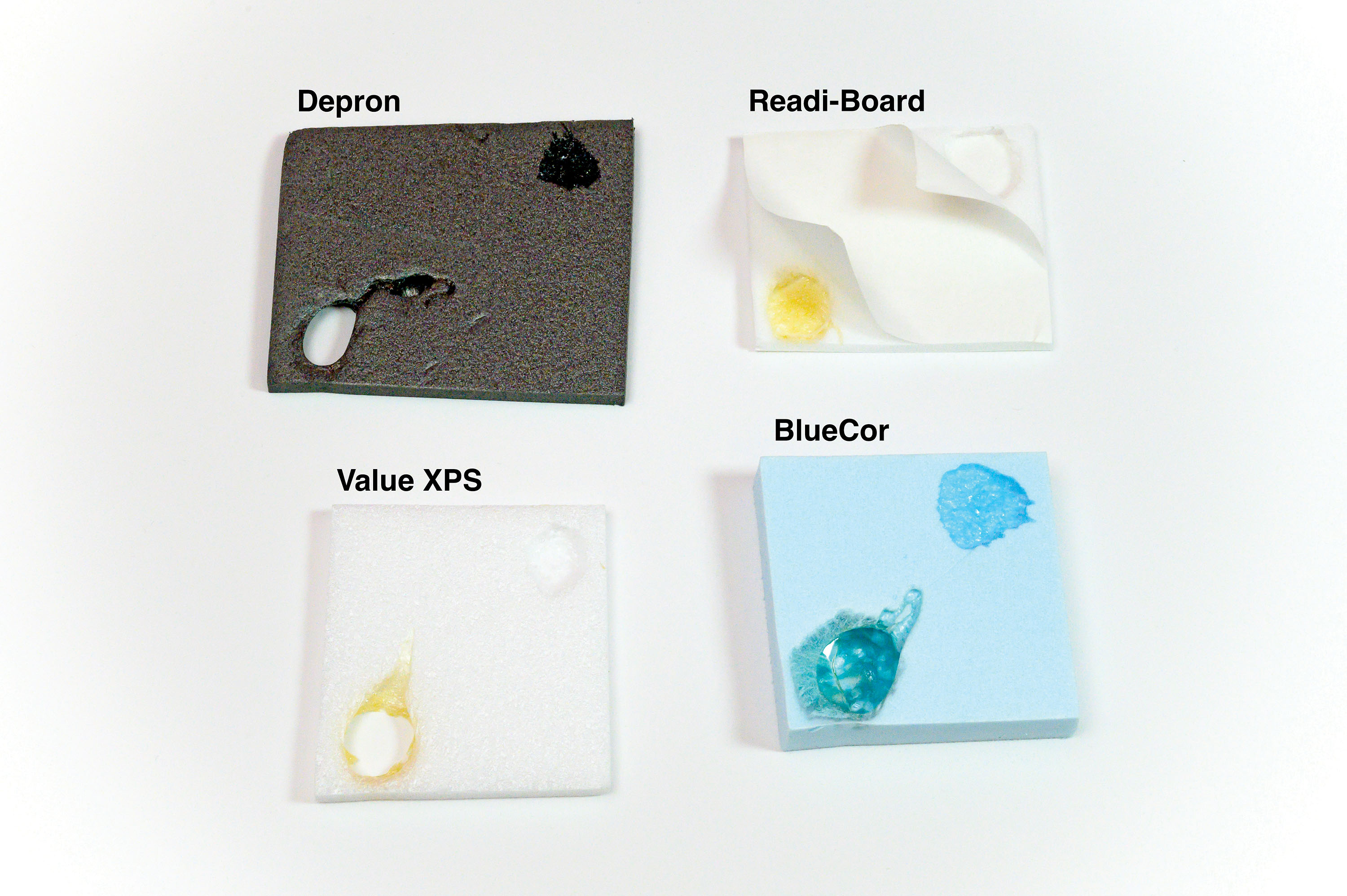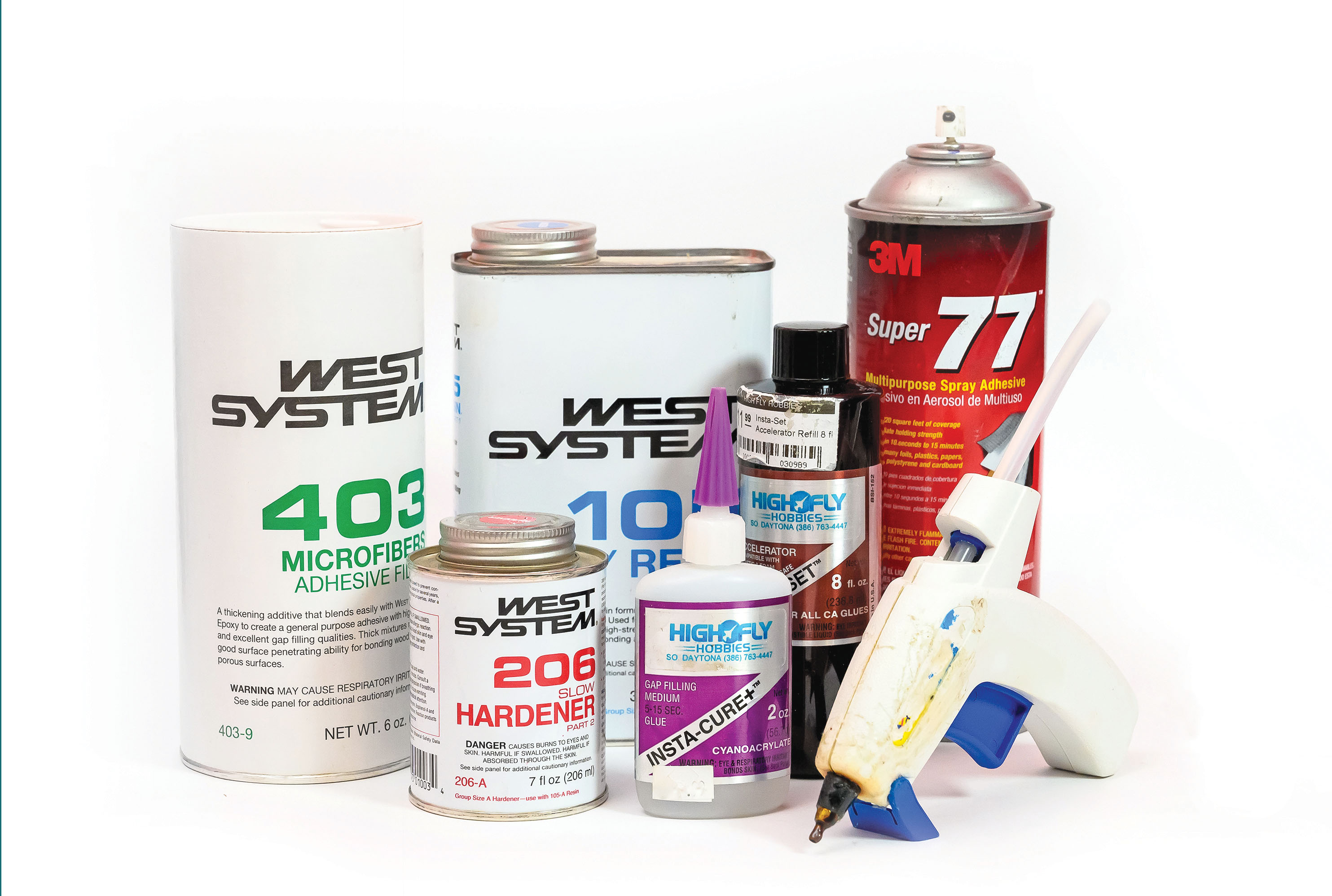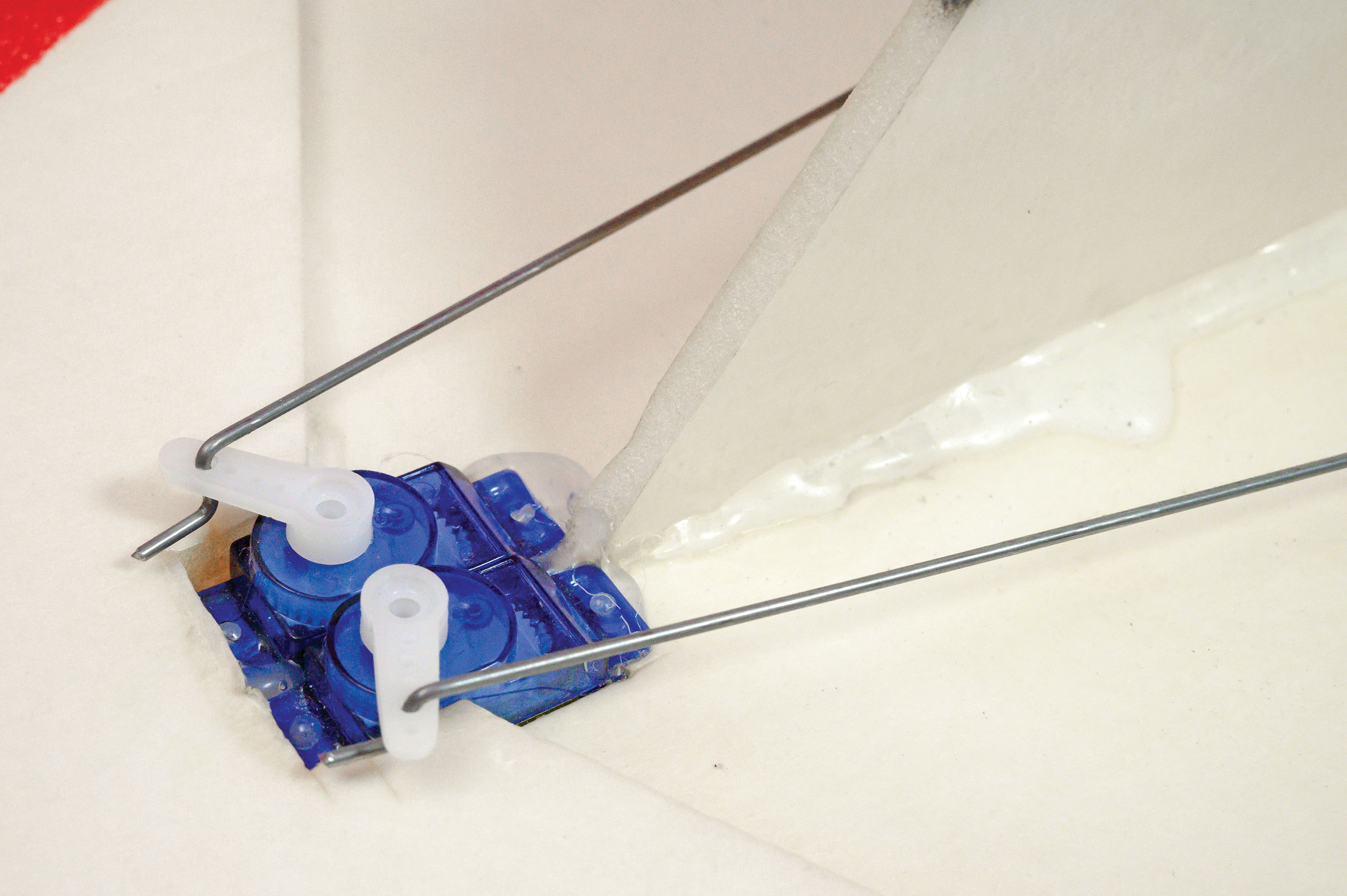
Written by Lucas Weakley New Technology As seen in the FALL 2019 issue of Park Pilot
>> Whether preparing a broken RTF (Ready to Fly) model or building an airplane from scratch, knowing where and when to use a variety of adhesives is crucial to getting into the air. In this column, I want to cover some of the adhesives that I commonly use on RC models.
This might sound like an entry-level discussion, but before I mention my most-used adhesives, I want to discuss the mechanics of how glues work and why certain adhesives melt foam. For the purpose of this article, I’ll be discussing adhesives in respect to foam RC aircraft.
Why is foam so sensitive to glue? Rigid foam materials are just bubbled up (or foamed) plastics. Foam is lightweight because there isn’t much material there—it’s mostly air. Most one-part adhesives use solvent inhibitors to keep them liquified while being stored. Plastics such as styrene are susceptible to being dissolved by these solvents. The structure of foam also means that the plastic has a lot of surface area and therefore reacts more violently to solvents than solid surfaces do.
The solvents found in one-part glues evaporate in air or are disabled by environmental compounds. This then either deposits the mechanically sticky glue or unchains a chemical reaction that hardens the adhesive. Before the solvents are completely gone, they can damage the structure of foam and even eat away large chunks of it.
In my Summer 2018 column, I discussed model airplane foam. Most of the foam boards that I mentioned are styrene based. Depron, Readi-Board, Fli-Power Value XPS, BLUECOR, The Home Depot insulation foam, and several others are all forms of foamed styrene, and therefore are susceptible to being dissolved by solvents. A notable exception is EPP (expanded polypropylene) foam, which is a modeling foam that is resilient to solvents. However, EPP’s lack of rigidity makes it difficult to use for all applications.
In light of how susceptible the best modeling foams are to adhesives, what should we use to assemble our models? The glues I mostly use are CA (cyanoacrylate or superglue), epoxy, contact cement, and hot glue. I will also mention a few other adhesives that I don’t frequently use.
CA is a fast-setting, structurally rigid adhesive that’s great for connecting components where excessive glue beads could cause problems. CA comes in different thicknesses—from instant curing, water consistencies that wick into joints, to gap-filling syrups. I use CA glue often to assemble flight controls and motor mounts.
CA is an acrylic polymer resin that is prevented from hardening by a mild acid inhibitor. The acid is weakened by water or alcohol. There is usually water in trace amounts on all surfaces because of humidity, which is why CA works so well to bond parts quickly.
In drier climates or with CA that requires a longer cure time (which has more inhibiting acid), an accelerator can be used. This is sprayed on before or after applying the CA and is a diluted alcohol or ethanol solution that reacts, weakening the acid in the glue.

Here, Lucas used CA to join BLUECOR pieces. The CA quickly melted the joined surfaces and ate away at the foam. Although the melting stopped, the joint was soft and not rigid.
CA is also good at melting styrene foam! There are foam-safe CAs that are especially useful for attaching small components rigidly and quickly, such as control horns in foam surfaces. Even if the CA is not foam safe, it is still incredibly useful for assembling the non-foam parts of models. For the times that I do use it, I prefer medium-thick CA, which can be found at most hobby shops and is manufactured by bSi (Bob Smith Industries; bsi-inc.com).
A foam-safe alternative to CA for creating rigid bonds is epoxy resin. Epoxy adhesives are two separate chemicals that, when mixed, have a chemical reaction that cures and hardens the entire mass of glue. This is useful because there are no additional chemicals to keep the two parts liquid. Without being mixed in solvents and acids, epoxies are compatible with most foam boards! Of course, this might vary depending on the brand of epoxy or foam used.
Epoxy is exceptionally versatile. Cure times can be tailored to as short as an hour or as long as a day. I use epoxy to join large surfaces, sheets, or edges because of the relatively long working time. It’s also my favorite glue to use to add spars in foamboard.
Epoxy can also be mixed with fillers to span gaps. I use West System epoxy (westsystem.com), typically with the company’s fast hardener.
Contact cements are good for instantly attaching long or flat components, whereas other adhesives would require being clamped or held while they cured. Contact cement is applied to both surfaces and left to dry. When dry, the two surfaces are pressed together and the cement bonds on contact.

Here are four commonly used foams with adhesive on them. Barge contact cement was used on the lower left piece of foam and medium CA on the upper left. Notice how the glue melted the foam.

This is Lucas’ collection of his most-used model adhesives (L-R): West System epoxy and filler, CA glue and accelerator, 3M Super 77, and a well-used hot glue gun.
Contact cement is a rubber suspended in solvents. When exposed to air, the solvents evaporate and the sticky, semisolid rubber is left behind. These solvents are sometimes very strong, and for this reason, contact cement will melt through styrene foam. EPP is a foam where contact cement is most useful. As mentioned, EPP is resistant to solvents and because the glued joints are flexible, they won’t crack as the bendable foam moves. Homax Welder all-purpose adhesive (homaxproducts.com) was included in my Twisted Hobbies Edge 540 kit (twistedhobbys.com). It’s clear and smelly but leaves no visible glue joints, and makes cracks and tears in the foam disappear after crashes.
Barge contact cement (bargeadhesive.com) is usually used for leather work and shoe repair, but it also works well on EPP foam. It isn’t clear like the Welder adhesive.
When gluing together large, flat surfaces, I primarily use 3M Super 77 Multipurpose Spray Adhesive (3m.com). This is a contact cement dispensed from an aerosol can. Unlike other contact cements, Super 77’s solvent propels the adhesive from the can and evaporates before touching the foam board. Super 77 can still melt foam for this reason, but if the spray nozzle is moved farther back, the solvent has more time to evaporate and will usually not melt the foam.
Last but not least is hot glue. I use hot glue primarily to combine subassemblies of model aircraft, such as tail joints, motor nacelles, wings, etc. Most of my servos and control horns are also attached using hot glue.
Hot glue is a mechanical adhesive. A stick of rubber is heated with a purpose-made dispenser and deposited between two surfaces. Although hot and liquid, the rubber adheres to the two surfaces then hardens when it cools. Because the rubber is chemically inert, it will not melt foam!
The heat generated by high-temperature hot glue guns, however, can collapse foam structures. For this reason, I try to use a medium-heat hot glue gun or I carefully monitor the gun’s temperature, making sure it never goes directly onto the foam part if the gun’s been sitting on the bench heating up for a while.
As for glues that I don’t use often, Gorilla Glue (gorillatough.com) is great for joining large surfaces or embedding composite spars into foam. Insulation foams such as BLUECOR or the pink foam from The Home Depot (homedepot.com) have special glues for joining these foam sheets. These adhesives are found in caulking gun tubes, usually next to the foam sheets.
Becoming educated on the fundamentals of adhesives is one of the most helpful skills I’ve learned in the hobby. It has helped my models look better and last longer.
Even if you already knew much of this, I hope that learning about the mechanics of adhesives and understanding why foam melts have been useful—or at least a little interesting!






